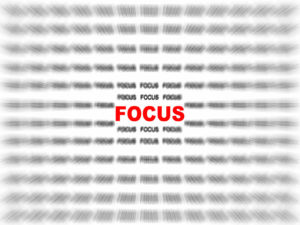
Contrast Sensitivity and Aging Vision
Old age isn’t always kind to the eyes. Even people with 20/20 vision will often see a general decrease in various eyesight and vision attributes as they get older. This is largely due to a long list of conditions that either become worse or more likely with age. Presbyopia, for example, an impairment of near vision, is literally a combination of Greek terms for “old man” and “sight” (not to exclude women, who also experience it). It also has something to do with contrast sensitivity.
Cataracts, age-related macular degeneration, glaucoma, diabetes – all of these pose serious risks to your vision. All are much, much more likely to hit as we age. And while the news isn’t all bad – nearsighted people will sometimes actually see their vision improve as they grow older – it isn’t, on balance, what we’d call good.
One of the most common and potentially serious changes is a serious loss of contrast vision. However, despite all that, it’s not among the most talked about changes. We’ll aim to change that here by talking about what contrast sensitivity is, how it changes with age, and what exactly can be done about it.
Contrast Sensitivity
While we often talk about visual acuity, or the basic accuracy of a person’s eyesight, as a standard of overall vision quality, it’s far from the full story. In fact, plenty of aging individuals can have technically excellent eyesight and still score highly on the Snellen charts used to test it, but still have severely reduced vision in practice.
Contrast sensitivity plays a large part in this. Contrast is, at its most basic definition, the difference between two colors, shades, or tones. When we’re discussing vision, contrast is a huge part of what allows us to identify and distinguish objects from the scenes they’re in.
Think about looking at a city skyline in the morning. You’ll see areas of high contrast where buildings stand out from the blue sky (let’s make our hypothetical day a good one), and areas of low contrast, with buildings in front of or next to other similarly-colored buildings. To actually distinguish where each skyscraper is, your visual system relies on cues such as shadow, tone, and color to decide where one object ends and the other begins.
Everyday Contrasts
 You can probably see why contrast is crucial to effective everyday vision. It’s one thing to be able to accurately see an approaching car. However, what if, due to reduced contrast sensitivity, you were unable to distinguish the car from the road? On a practical level, that’s much the same thing as having extremely poor visual acuity. In both cases, you won’t be able to tell that there’s a car coming. This is obviously incredibly dangerous. Even if you do notice it because of other visual or audio cues, you won’t be able to tell precisely where it is.
You can probably see why contrast is crucial to effective everyday vision. It’s one thing to be able to accurately see an approaching car. However, what if, due to reduced contrast sensitivity, you were unable to distinguish the car from the road? On a practical level, that’s much the same thing as having extremely poor visual acuity. In both cases, you won’t be able to tell that there’s a car coming. This is obviously incredibly dangerous. Even if you do notice it because of other visual or audio cues, you won’t be able to tell precisely where it is.
Because of this, contrast sensitivity needs to be understood as an integral part to a healthy visual system. Unfortunately, it’s among the most likely ones to fade with age. Many of the disorders that preferentially affect older people also affect contrast sensitivity. Cataracts are notorious for this. These obscuring proteins reduce the contrast in an affected person’s visual field. This makes it much more difficult to perceive what remains. Glaucoma is similarly known to decrease contrast vision, as are macular degeneration, Alzheimer’s Disease, and even stroke.
People with decreased sensitivity can have an extremely difficult time perceiving detail around them. Everyday tasks obviously become more difficult, and potentially even dangerous, as in the case of driving. Near-work also suffers and reading can become very laborious and unpleasant, especially if letters aren’t well-contrasted with their background. People with reduced contrast vision also experience falls, injuries, and decreased quality of life more frequently.
Responding to Low Contrast Sensitivity
For anyone having a tougher time perceiving contrast, the first step is to ensure that they can continue to live safely. Hazard-proofing a house is a good idea for folks with reduced vision, no matter the cause, and can make life much easier if done correctly. If you or a loved one suffers from low contrast sensitivity, taking these proper steps can greatly decrease the risk of falls.
When dealing with contrast sensitivity, keep in mind that object distinction is a priority. Use lighting to increase contrast and equip them with timers or easy-access switches as needed. Take special care to illuminate fall hazards such as stairs or thresholds. To build on that, take advantage of contrast rules. If a step is difficult to see even with good lighting, find a color of tape that clashes horrifically with the material the step is made of. It might not be the most aesthetically pleasing solution, but it will go a long way toward making a house safer.
Treatment Options
Actually treating age-related contrast sensitivity is another matter entirely. As of now, options are very limited. An intermediate step is the use of high-contrast filters, like those seen in ski goggles. Some people find that blocking certain types of light can help sharpen the visual field, but it’s far from a catch-all solution, and won’t work for everyone.
You can also always support your vision throughout your life through a nutritional diet and supplements. Our Rebuild Your Vision Ocu-Plus formula contains seventeen vitamins and minerals that support better vision health. Taking these important steps now can greatly enhance your quality of life later on. THey may help prevent issues like cataracts that make contrast vision more difficult. However, again, there’s no one solution that will definitively prevent the loss of contrast vision.
Luckily, this may change. The American Optometric Association recommends a variety of exercises to help improve contrast vision. So, if you notice a change in your contrast vision, you may yet have hope in regaining some of that ability. While the idea of visual training to effectively treat contrast sensitivity and similar disorders is only just now starting to show promising signs, we hope and expect to see it blossom in the coming years.
Our Rebuild Your Vision Ocu-Plus Formula Contains All 17 Vitamins, Minerals, and Herbal Supplements to Improve Your Eye Health!












I am absolutely thrilled to hear that there may be a way of treating reduced contrast vision. Please tell us more about these striped images. Are they available on You tube? I think they would help me.
Hi. I want to have clear vision. I am a single father and am on a budget every week. I am 37 and my current prescription is -0.75 in both eyes. Not the worst but still not clear and so very frustrating still. What’s the average time before I start to see some results? Thanks T.